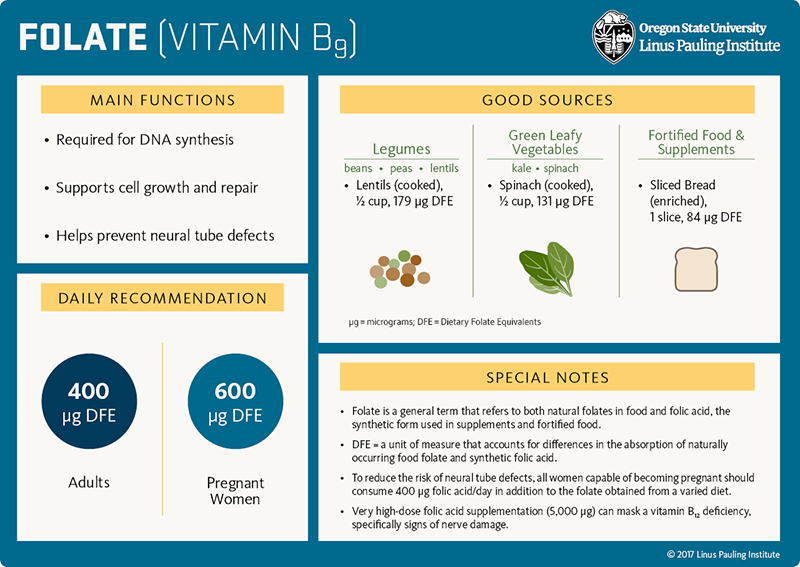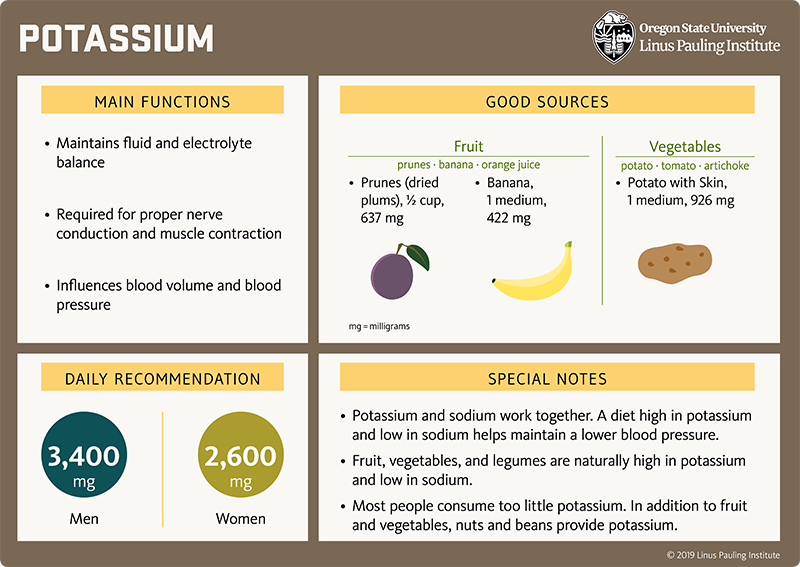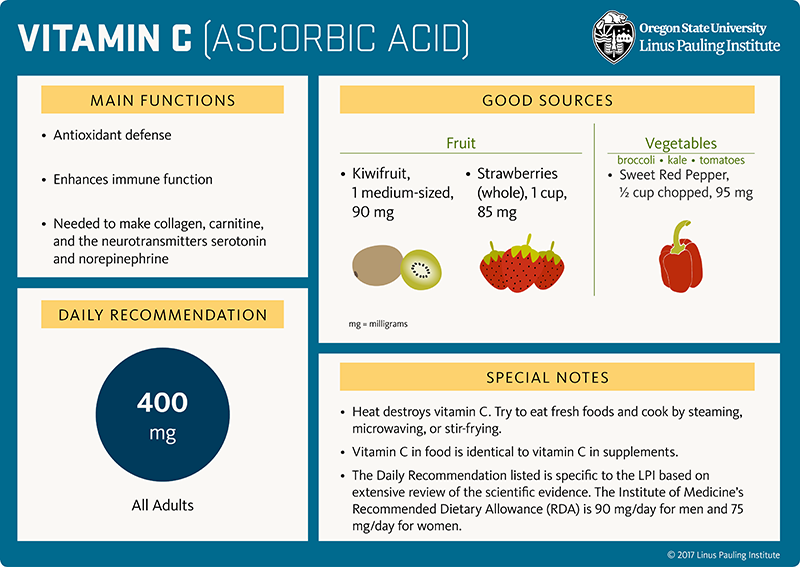Nutrition Research
-
Micronutrients
-
Food & Beverages
Summary
Higher dietary intake of certain nutrients, such as potassium and vitamin C, is associated with a reduced risk of stroke; it is advised to obtain these nutrients by increasing fruit and vegetable intake because fruit and vegetables are rich in many nutrients and dietary factors that benefit cardiovascular health. Additionally, higher intake of whole grains, increased fish consumption, and moderate consumption of alcoholic beverages are each associated with a reduced risk of ischemic, but not hemorrhagic, stroke.
Disease Overview
A stroke occurs when blood flow to part of the brain is reduced or stopped completely. There are two types of stroke: ischemic stroke and hemorrhagic stroke.
-
Ischemic strokes are the result of insufficient blood flow to an area of the brain; they occur when an artery to the brain narrows or is blocked by a blood clot. Most strokes (~87%) are ischemic in nature and associated with atherosclerosis as an underlying condition.
-
Hemorrhagic strokes occur when a weakened blood vessel ruptures and bleeds into the surrounding brain tissue.
As a result of blood vessel obstruction or rupture, part of the brain does not receive the oxygen and nutrients it needs. Brain cells in the affected area cannot function and die within minutes.
High blood pressure (HBP) is the leading cause of stroke. This is because chronic HBP damages arteries, creating weak spots as well as sites prone to plaque buildup. Thus, HBP increases the risk for both ischemic and hemorrhagic stroke.
Atrial fibrillation is also a major cause of stroke. This is because a rapid, erratic heartbeat allows blood to pool in the atria (the upper chambers of the heart), increasing the formation of blood clots.
See below for specific information about nutrients and dietary factors relevant to stroke.
DEFINITIONS
Ischemia - inadequate blood supply to an organ or part of the body
Ischemic stroke - a type of stroke that occurs when a blood vessel to the brain is blocked
Hemorrhagic stroke - a type of stroke that occurs when a blood vessel in the brain bursts
Commonly Used Medications
Antiplatelets (such as aspirin) and anticoagulants (such as warfarin) interfere with the blood’s ability to clot.
Aspirin
What it does
-
Aspirin is an antiplatelet agent.
-
Specifically, aspirin inhibits the production of a chemical (thromboxane) that signals cell fragments (platelets) to stick together at a wound site.
-
The clumping together of platelets is an early step in the sequence of events that lead to the formation of a blood clot.
What we know
-
Aspirin is often recommended to prevent recurrent heart attacks and strokes.
-
Excess bleeding is the most important harm associated with aspirin use.
-
In high-risk patients (individuals with evidence of vascular disease), the benefits of long-term aspirin use substantially exceed bleeding risks, regardless of age or gender.
-
Routine use of aspirin is currently not recommended for prevention of cardiovascular disease (CVD) in the general population.
-
Although available over-the-counter, aspirin is a potent medicine, can have side effects, and may interact with other medications. Consult with your healthcare provider before adding aspirin to your routine.
References
-
Cuzik J, et al. Estimates of benefits and harms of prophylactic use of aspirin in the general population. Annals of Oncology. 2015 Jan;26(1):47-57. Epub 2014 Aug 5
-
Sutcliffe P, et al. Aspirin in primary prevention of cardiovascular disease and cancer: a systematic review of the balance of evidence from reviews of randomized trials. PLoS One. 2013 Dec 5;8(12):e81970
-
Antithrombotic Trialists’ (ATT) Collaboration, Baigent C, et al. Aspirin in the primary and secondary prevention of vascular disease: collaborative meta-analysis of individual participant data from randomised trials. Lancet. 2009 May 30;373(9678):1849-60
Table 1. Potential Nutrient Interactions with Aspirin*
|
Supplements That May Increase Bleeding Risk |
Aspirin May Decrease |
Aspirin May Increase |
Factors That May Increase Aspirin Bioavailability |
|
Fish oil supplements |
Folate status |
Chromium absorption |
Caffeine |
|
Garlic supplements |
Vitamin C status |
|
Alcoholic beverages |
|
Vitamin E supplements |
|
|
|
|
*This list is not comprehensive. Talk to your doctor or pharmacist about potential interactions between any dietary supplements and medications you are taking. |
DEFINITION
Bioavailability - the fraction of ingested compound that reaches the circulation and is transported to the site of action.
For references and more information, see the Safety sections in the vitamins, minerals, and dietary factors listed in Table 1.
Warfarin (Coumadin)
What it does
-
Warfarin is an anticoagulant agent and considered more aggressive than aspirin.
-
Warfarin inhibits the synthesis of clotting factors, proteins that make up a blood clot.
-
These clotting factors are made with the assistance of vitamin K. Warfarin works by interfering with vitamin K metabolism, thereby reducing the synthesis of vitamin K-dependent clotting factors. Because it interferes with vitamin K metabolism, warfarin is considered a ‘vitamin K antagonist’.
What we know
-
Warfarin is generally recommended only for patients with strokes caused by clots originating in the heart and people with atrial fibrillation.
-
Large quantities of dietary or supplemental vitamin K can overcome the anticoagulant effect of vitamin K antagonists like warfarin; thus, patients taking warfarin are cautioned against consuming large or highly variable quantities of vitamin K.
Table 2. Potential Interactions with Warfarin*
|
Factors That May Increase Bleeding Risk |
Factors That May Decrease Warfarin Activity |
|
Acute alcohol consumption |
Coenzyme Q10 supplements |
|
Curcumin supplements |
Excessive intake of green tea |
|
Fish oil supplements |
High intake of soy protein |
|
Garlic supplements |
Potassium iodide at pharmacological doses |
|
Vitamin E supplements |
Psyllium (soluble fiber) supplements |
|
|
Vitamin C supplements |
|
|
Vitamin K supplements |
|
*This list is not comprehensive. Talk to your doctor or pharmacist about potential interactions between any dietary supplements and medications you are taking. |
For references and more information, see the Safety sections in the vitamins, minerals, and dietary factors listed in Table 2.
Nutrition Research
DEFINITIONS
Test tube (in vitro) experiment - a research experiment performed in a test tube, culture dish, or other artificial environment outside of a living organism; in vitro is a latin phrase meaning in glass
Animal experiment - a research experiment performed in a laboratory animal; many different animal species are studied in the laboratory, including terrestrial (land), aquatic (water), and microscopic animals
Observational study - a human research study in which no experimental intervention or treatment is applied, and participants are simply observed over time
Randomized controlled trial - a human research study in which participants are assigned by chance alone to receive either an experimental agent (the treatment group) or a placebo (the control group)
Placebo - a chemically inactive substance
Folate
What it does
General
-
Folate is a B-vitamin required for DNA synthesis and the formation of new cells.
-
Additionally, the B-vitamins folate, vitamin B12, and vitamin B6 work together to maintain normal concentrations of homocysteine in the body.
Stroke-specific
-
Elevated blood homocysteine is a risk factor for stroke; therefore, supplementation with homocysteine-lowering B-vitamins is being investigated for stroke prevention.
What we know
-
Folate-rich diets are associated with a lower risk of cardiovascular disease, including coronary artery disease, heart attack, and stroke.
-
Increased intake of folate from food or folic acid from supplements decreases homocysteine concentration in the blood.
-
Pooled analyses of randomized controlled trials show that supplemental folic acid, along with other B vitamins, lowers the risk of stroke.
-
Homocysteine-lowering therapy (supplemental folic acid, vitamins B6, and vitamin B12) reduces the risk of recurrent stroke.
-
Folic acid supplementation decreases the risk of stroke in patients with existing cardiovascular disease, as well as in people without cardiovascular disease.
For references and more information, see the section on Folate and homocysteine in the Folate article.

[Download PDF]

Intravenous Magnesium
What it does
General
-
Magnesium is an essential mineral that serves as a structural component of the skeleton; assists in hundreds of enzymatic reactions involved in the synthesis of energy, DNA, and proteins; and is required for proper nerve conduction and muscle contraction.
Stroke-specific
-
Magnesium sulfate is a calcium channel blocker and potent vasodilator.
-
Intravenous (IV) magnesium sulfate infusions have been tested in the prevention of vasospasm following aneurysmal subarachnoid hemorrhage (aSAH).
What we know
-
Intravenous magnesium sulfate is provided by healthcare professionals only.
-
Several randomized controlled trials have tested IV infusion of magnesium sulfate in aSAH patients. Although IV magnesium sulfate may reduce vasospasm and delayed cerebral ischemia, no benefits on neurologic outcome or risk of death were demonstrated.
-
At present, the data advise against the use of IV magnesium in clinical practice for aSAH patients after normalization of their magnesium status.
DEFINITIONS
Vasodilator - something that widens blood vessels
aSAH - bleeding in the area surrounding the brain following the rupture of an aneurysm.
Aneurysm - a bulge in a blood vessel caused by a weak spot
Ischemia - inadequate blood supply to an organ or part of the body
For references and more information, see the section on aneurysmal subarachnoid hemorrhage in the Magnesium article.

Potassium
What it does
General
-
Potassium is an essential mineral that helps maintain fluid and electrolyte balance, influences blood pressure, and is required for proper nerve conduction and muscle contraction.
Stroke-specific
-
High blood pressure is a major risk factor for stroke, and potassium helps keep blood pressure in healthy limits.
What we know
-
Several large observational studies report that increased potassium intake is associated with a decreased risk of stroke.
For references and more information, see the section on stroke prevention in the Potassium article.

[Download PDF]

Vitamin C
What it does
General
-
Vitamin C (ascorbic acid) is a water-soluble vitamin that neutralizes a variety of reactive oxygen species and recycles important cellular antioxidants.
-
Vitamin C is also a cofactor in numerous enzymatic reactions involved in the making of collagen, L-carnitine, and several neurotransmitters, and in the regulation of gene expression.
Stroke-specific
-
High blood pressure is a major risk factor for stroke, and supplemental vitamin C helps to lower blood pressure.
What we know
-
Observational studies demonstrate that higher vitamin C concentrations in the blood are associated with a lower risk of stroke.
-
Blood concentrations of vitamin C are highly correlated with fruit and vegetable intake. It is therefore difficult to separate the influence of vitamin C from other nutrients and bioactive substances in fruit and vegetables that may also influence the risk of stroke.
-
Overall, the data emphasize the benefits of a diet rich in fruit and vegetables (rather than supplementation with vitamin C specifically) in reducing stroke risk.
DEFINTIONS
Reactive oxygen species (ROS) - highly unstable oxygen-containing compounds that react easily with nearby cellular structures, potentially causing damage
Antioxidants - compounds that prevent or repair the damage caused by reactive oxygen species
For references and more information, see the section on stroke in the Vitamin C article.

[Download PDF]

Alcoholic Beverages
What they do
General
-
Alcoholic beverages contain ethanol and other ingredients with bioactive properties that may benefit health.
-
When consumed in moderation (no more than two drinks/day for men and one drink/day for women), alcoholic beverages have been associated with beneficial effects in the cardiovascular system.
-
On the other hand, heavy alcohol consumption (more than five drinks/day) has been consistently associated with negative effects in many organ systems.
Stroke-specific
-
Moderate alcohol consumption appears to inhibit blood clot formation.
-
Heavy alcohol consumption may contribute to high blood pressure, heart muscle damage, cardiac arrhythmias, and blood clotting disorders.
What we know
-
Moderate alcohol consumption is associated with a reduced risk of ischemic, but not hemorrhagic, stroke.
-
Heavy alcohol consumption is associated with an increased risk of both ischemic and hemorrhagic stroke.
For references and more information, see the section on the Potential Benefits of Moderate Alcohol Consumption and the section on Health Risks of Heavy Alcohol Consumption in the Alcoholic Beverages article.

Whole Grains
What they do
General
-
Whole grains are the seeds of plants belonging to the grass family. The grass family includes wheat, rice, maize (corn), barley, oats, and rye.
-
Whole-grain products contain all three layers of the seed: bran, endosperm, and germ.
-
In contrast to whole grains, refined grains are stripped of the bran and germ layers. Some essential nutrients (thiamin, riboflavin, niacin, and iron) are added back to the grain after the refining process, producing what is known as an “enriched grain.”
Stroke-specific
-
Whole grains contain several nutrients and dietary factors that are associated with cardiovascular disease risk reduction:
-
whole grains are a source of folate, magnesium, and potassium.
-
the soluble fiber present in certain whole grains (oats, barley) contributes to a reduction in total- and LDL-cholesterol concentrations.
-
whole grains are a source of phytosterols, a plant chemical that interferes with the intestinal absorption of cholesterol.
-
consumption of fiber-rich whole grains decreases dietary glycemic load, leading to slower absorption of glucose and a more sustained blood insulin concentration.
What we know
-
Higher intake of whole grains (about three servings per day) is associated with significant reductions in the risk of coronary heart disease and ischemic stroke.
For references and more information, see the section on stroke in the Whole Grains article.
